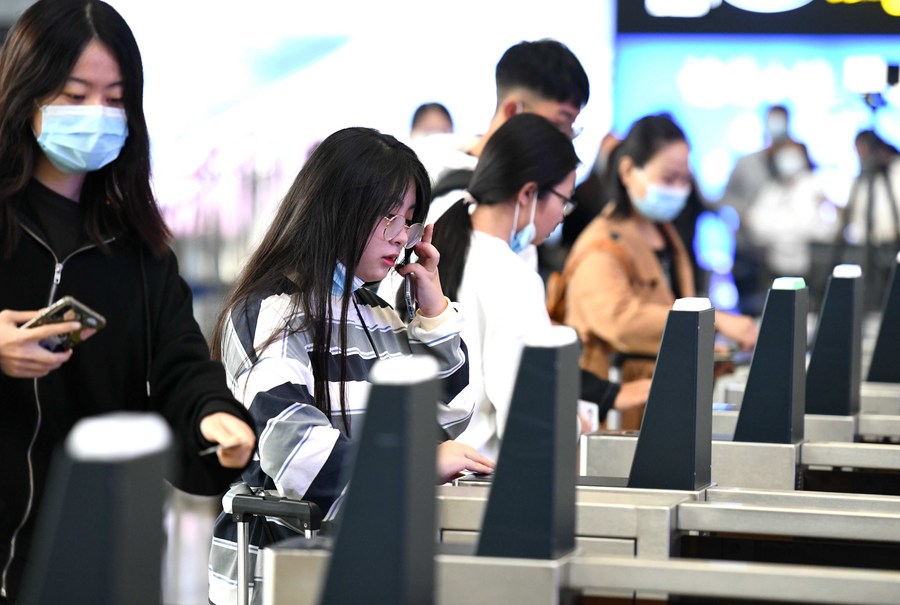
Passengers check in via the facial recognition system at the Shijiazhuang railway station in Shijiazhuang, north China's Hebei Province, Oct. 7, 2021. (Photo by Chen Qibao/Xinhua)
BEIJING, Aug. 10 -- China has unveiled draft regulations and begun soliciting public opinion regarding the security management of facial recognition technology in order to regulate relevant technology use and bolster personal data protection.
According to experts, key takeaways from this draft issued by the Cyberspace Administration of China could be summarized into three critical principles which are: "minimal use," "consent-based," and "minimal storage."
TACKLING MISUSE
China's digital economy has seen explosive growth in recent years with the widespread application of facial recognition technology. As of December 2022, the number of internet users in China reached 1.067 billion, with an internet penetration rate of 75.6 percent.
However, the proliferation of facial recognition technology has also posed increased challenges for personal information protection due to irregular usage.
Experts believe that the draft regulations are a response to tackle the misuse of facial recognition technology.
"Facial recognition technology, with its unparalleled technological advantages, has become an effective means to promote digital economic development and social governance," says Hong Yanqing, a professor at the School of Law, Beijing Institute of Technology.
"However, at the same time, facial recognition technology not only captures citizens' facial information but also has the ability to further identify individuals, track their movements, and more. The integration and correlation of these pieces of information could easily lead to personal data breaches, posing a threat to both privacy and property rights," Hong added.
According to him, these regulations should be implemented to govern the application of facial recognition technology, based on the principles of respecting personal dignity and privacy rights, thereby, protecting personal information and safeguarding public interests.
SUCCINCT EXPLAINER
The draft regulations outline specific conditions governing the utilization of facial recognition technology, including its application in processing facial information and providing related products or services.
The critical principles of the draft regulations can be succinctly summarized as follows:
-- Minimal use
Facial recognition technology should only be used for specific purposes and with adequate necessity, while strictly adhering to protection measures, according to the draft.
In cases where alternative non-biometric recognition methods can achieve equivalent objectives or meet business needs, these alternatives should be given preference.
-- Based on consent
The draft requires obtaining explicit or written consent from individuals before using facial recognition technology to process their facial information.
The technology should only be used when individuals are fully informed and actively involved, with clear, understandable prompts about the purpose of identity verification.
"In cases where the facial recognition technology user processes facial information of individuals who are under the age of 14, they must obtain separate written consent from the parents or other legal guardians of the individual," reads the draft.
-- Minimal storage
The draft states that, except under statutory conditions or with individual consent, users of facial recognition technology are prohibited from retaining original facial images, pictures, or videos. However, an exception exists for anonymized facial information that has undergone proper anonymization processing.
Unnecessary collection of irrelevant facial information should be avoided, and if unavoidable, such information should be promptly deleted or anonymized, it adds.
FAVORABLE PUBLIC OPINION
The draft regulations have been met with a favorable response from the general public. There is widespread anticipation that these regulations will encourage technology users to prioritize information security, leading to an enhancement in the role of facial recognition technology in improving people's daily lives.
The draft provides practical guidelines and will serve as a comprehensive and targeted regulation framework for the real-world application of this specific technology, according to a report by the Workers' Daily newspaper.
Given the current state of facial recognition technology, tightening legislation and supervision to reasonably regulate related technology is deemed necessary, the report states.









